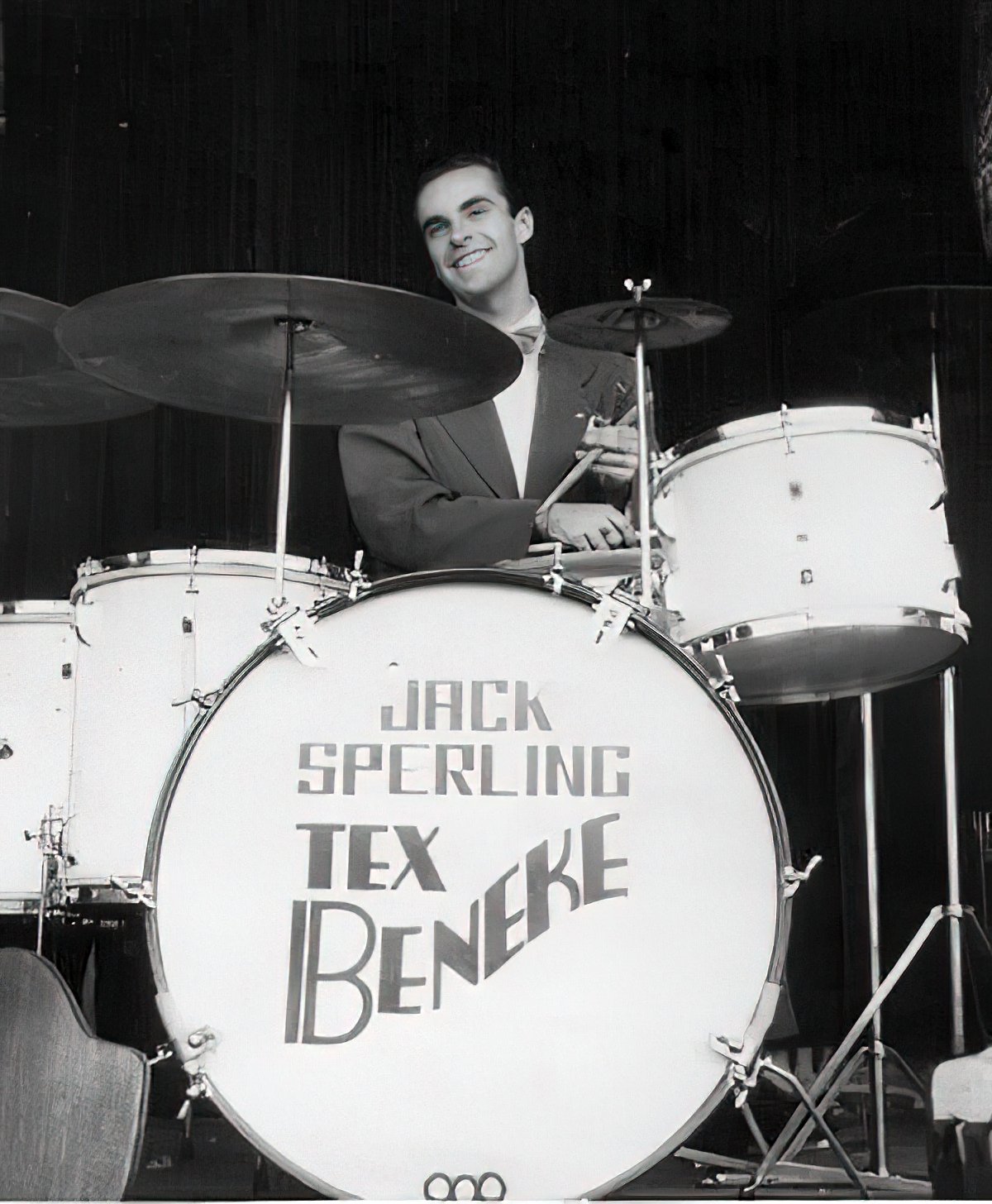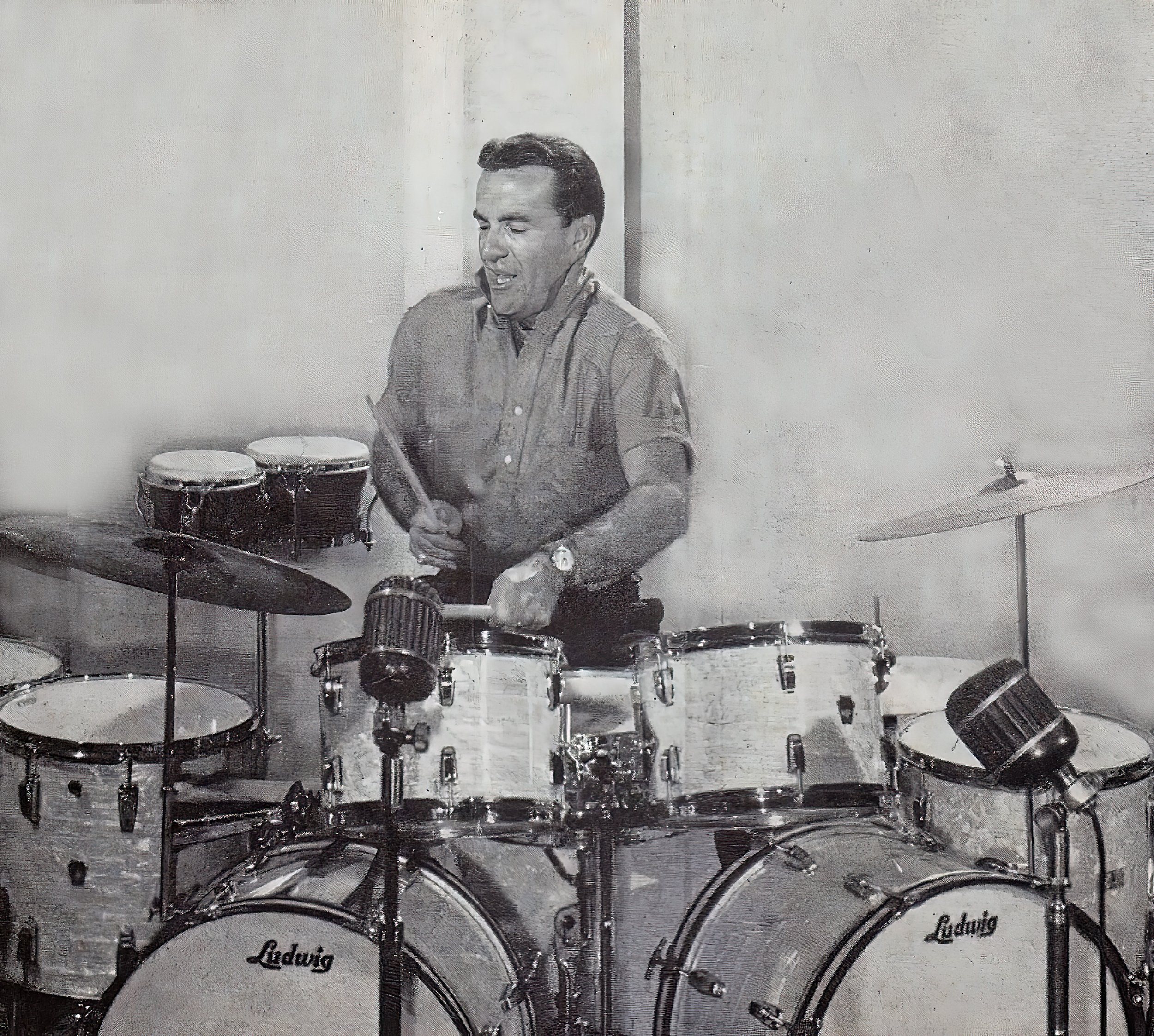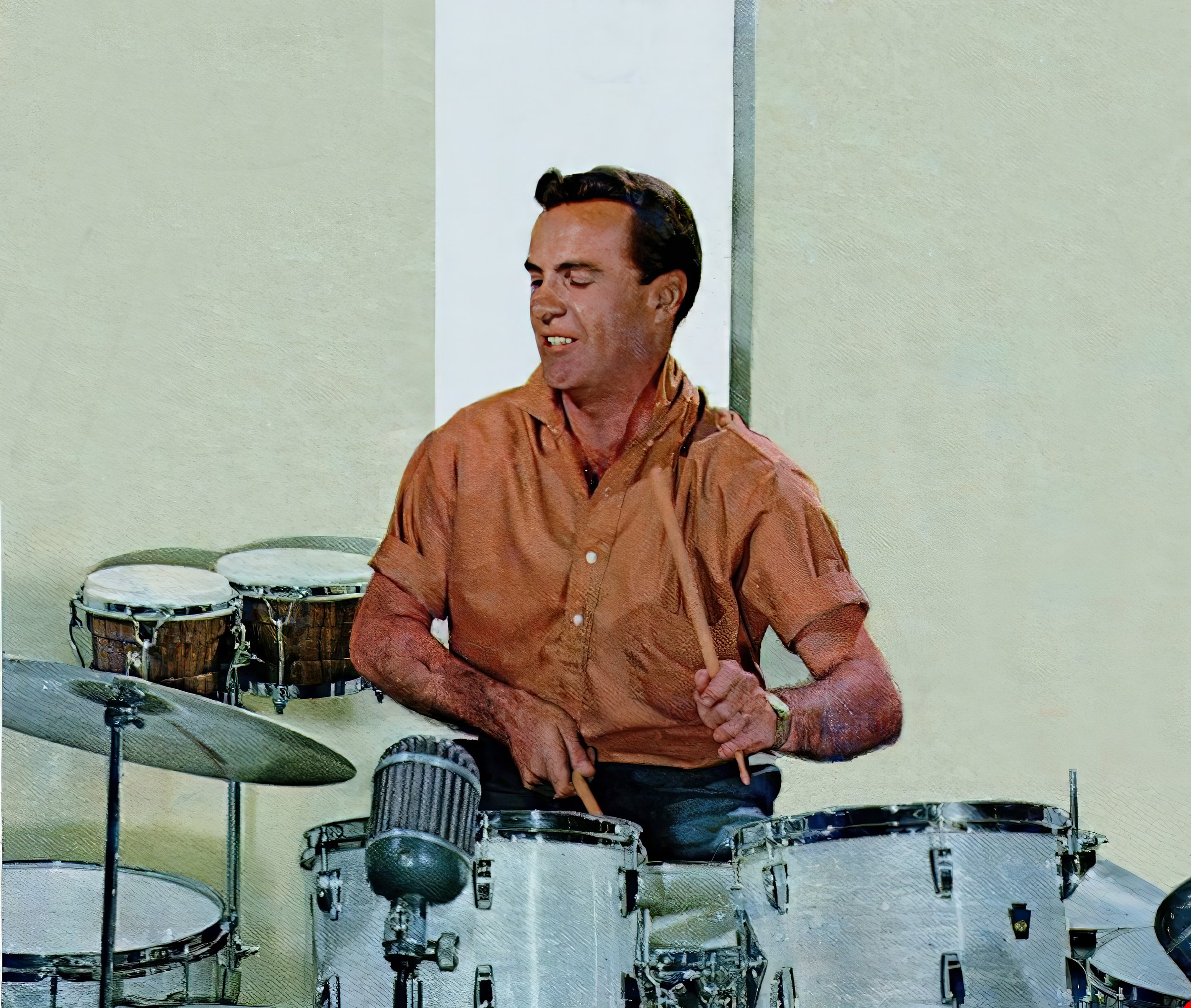by Bob Spellman
Jack was born in Trenton, New Jersey on August 17, 1922. He began his musical career when he was four years old, playing violin, just like Joe Morello. Then he heard Gene Krupa, abandoned the violin and taught himself the drums, just like Gene. By the time Jack was 15, he was a professional. At 19, he was performing with Bunny Berigan. Jack joined the navy during World War II and played in navy bands and often under the direction of Tex Beneke – sax player with the Glenn Miller Band. After Miller’s tragic death, Beneke took over the band and hired Sperling. This gig launched Jack’s career. In 1948 he gained national notoriety for his brilliance on St. Louis Blues March. (https://youtu.be/dlDOI-KGtBI), and his solo on Hallelujah (https://youtu.be/Hky2u-iB8io ).
The rest of his distinguished career was a who’s who of drumming: Les Brown and His Band of Renown, Bob Crosby's Bob Cats, Charlie Barnet, Benny Goodman, Page Cavanaugh and Pete Fountain. Jack was Henry Mancini’s favorite drummer. He worked on the television show Peter Gunn, on soundtracks for the films Charade and Days of Wine and Roses, the theme from Hogan’s Heroes. Between 1959 and 1972 he was under contract with the NBC Orchestra, played with The Tonight Show Band and worked on TV variety shows of the day, including: Rowen & Martin’s Laugh-In, The Dean Martin Show and The Andy Williams Show. In the studio, he recorded with Rosemary Clooney, Bobby Darin, Sammy Davis Jr., Doris Day, Ella Fitzgerald, The Four Freshmen, Lena Horne, Peggy Lee, Elvis Presley, Frank Sinatra, and Mel Tormé.
From his very early days Jack exhibited Louie Bellson’s charm and Jeff Hamilton’s exuberance. You can hear that joy in every rudiment, groove, fill, and solo he ever played. He was, like Bellson, one of the first to use double bass drums and, like Joe Jones, Jack had a floor tom on either side of his snare. With all this stuff, you might assume that Jack was a “showboat”, but he was not. His solos all made musical sense – dynamic in volume and complexity, each complementing the melody. Jack was articulate, innovative, purposeful, precise, tasteful and professional. Everything he did fit perfectly and never got in the way. He played just enough but never too much. You don’t get the feeling as with many drummers of that era (and of today), that Jack was getting paid more every time his stick hit the drum. What’s more, Jack was comfortable with jazz genres from Dixieland to bebop and proficient both in driving a big band and enriching a small combo.
I was introduced to Jack Sperling’s brilliance when my father gave me the Pete Fountain New Orleans album for my 10th birthday. Up to that point, I had performed nightly in my living room with the Benny Goodman Band and their amazing 1938 Carnegie Hall Jazz Concert. My contribution to the Goodman band greatly enhancing the drumming of Krupa, especially on Sing, Sing, Sing. But when I heard the Pete Fountain album, I heard drumming elegance. Only four musicians played the session– Jack on drums, Stan Wrightman on piano, Morty Corb on bass and, and of course, Pete. And they made a lot of music. I had never heard a drummer play an 8 and 16-bar solo introduction to a song, I had never heard such precise articulation and subtle touch, and, I suppose, I’d not heard drums played as a musical instrument. Jack wasn’t just in there to keep the beat or to hit stuff hard, he was a partner in the whole affair. I realize happy isn’t a musical term, but his drumming always seemed happy.
I would like you to listen to the entire album to hear how he modified and enhanced classic New Orleans drumming with jazz fills and even some semi-Latin grooves. But at least listen to 2 minutes and 29 seconds of what he did on that album with Saints Go Marching In. https://youtu.be/fS2n-s6Y3jI
And maybe check out his hand drumming with Peggy Lee on Fever (https://youtu.be/EYxoAJ3Boyc),
his brush work with Caterina Valente on That Old Black Magic (https://youtu.be/BSHcw_UveAI)
and the introduction to Fascinating Rhythm with Leslie Uggams (https://youtu.be/KUfq5oRfpxA).
So, I was 10 then and 65 years later I still play along with Jack. I still play the same 1963 white marine pearl Rogers drums that Jack played, and I still marvel at his brilliance. I finally got to meet Jack in Palm Springs about 30 years ago. He was gracious and kind and smiled from ear to ear when I told him how long we had been performing together. When we met, I was carrying my two-year old son on my shoulders. Jack asked me if he was going to be as drummer as well. I said that I was actually hoping for a doctor.
Although not as publicly well known as Gene or Buddy or Shelly or Louie, Jack was a treasure. He had steady work his entire career, he always had money, he behaved himself, and he came to play. As you may expect, Jack spent time teaching and coaching and encouraging.
In 1943, Jack married Louise Permetti; they had four kids. After she passed away, he married Nancy Lewis. Jack died at the age of 83 in Los Angeles on February 26, 2004.
I’m going to leave you with the words of Jack’s inspiration, Gene Krupa, who said in a DownBeat article in March, 1962: “My job remains…to keep time, to extract appropriate supporting sounds from the instrument, to be a musician.



